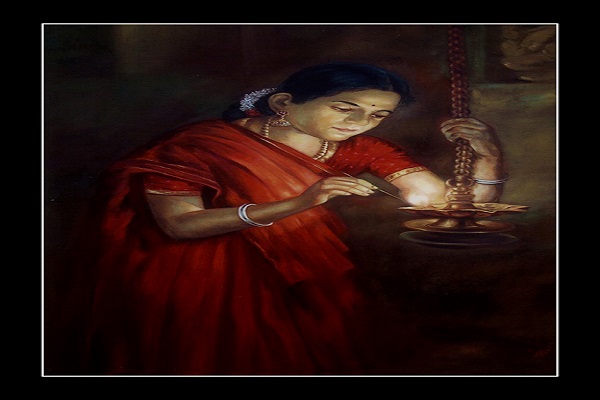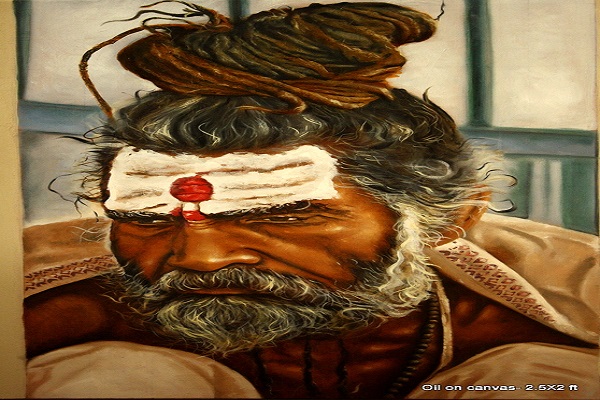.jpg)
Since earlier, expressions, feelings, and aspirations of several civilizations and realms have always been strongly reflected through the arts. This is because they portray the spirit of bygone times, traditional paintings, in particular, hold a special place in the world of art. In the digital realm, art gallery websites have developed into a superb platform for showcasing these classic works of art.
In this comprehensive blog post, I’ll let you explore the fascinating world of traditional paintings along with the ways in which the art gallery websites act as access points to their enduring themes. So, let’s get into the deep knowledge pool!
Springiness of Traditional Paintings
Rather than just a picture or image, traditional paintings are more than that. Eventually, they are historical stories that have been etched on the canvas. They represent the aesthetics, beliefs, and worldviews of the ages. The fact that these paintings have weathered the test of time demonstrates their longevity and significance. From the fine intricacies of Renaissance art to the ethereal vistas of Romanticism, each image captures the essence of its realm.

Art Gallery Websites - Way to Bridging the Gap of Ages
In this technologically advanced era, where connecting to the past and present is easy, art gallery websites are one top way that bridge the gap between traditional paintings and modern or contemporary audiences. Furthermore, art gallery websites give access to viewers to a wide variety of traditional artworks. Additionally, they also enable the viewers to virtually travel across many cultures and historical periods. With a few mouse clicks, viewers can go to a Renaissance palace or an Oriental tea garden to see the workmanship and tales of bygone times.
Unveiling Timeless Themes
The following ways are essential to unveil the timeless themes. So, let’s examine each of them.
1. Identity and Portraiture:
Traditional paintings typically depict the faces and behaviors of historical characters, offering insights into both their identities and the cultural norms of the period. The ideals and objectives that molded individuals and societies are represented in portraits, which show more than simply physical attributes.
2. Courtesy of Nature:
Many traditional paintings emphasize the majesty of nature, from calm landscapes to vivid flower arrangements. Therefore, the interaction between humans and the natural world is a recurrent subject that emphasizes how naturally connected individuals are to their surroundings.
3. Religion and Mythology Narratives:
Religion and mythology have always served as key sources of inspiration for artists. Although, traditional paintings usually depict religious scenes, offering insights into the spiritual ideas and stories that have influenced many civilizations' worldviews.
4. Daily Life and Social Reality:
Traditional paintings provide insights into people's daily lives from various times. Moreover, these paintings, ranging from busy marketplaces to private family scenarios, give insight into ancient social dynamics and traditions.
5. Allegory and Symbolism:
Traditional paintings frequently employ allegorical and symbolic subjects to convey deeper meanings. Additionally, these symbols, which are typically drawn from cultural and historical contexts, allow viewers to decipher hidden messages and examine the artwork's various layers.

Admiring Traditional Artworks in the Digital Realm
The following ways are considerable to appreciate traditional paintings in the digital realm. So, let’s examine each of them.
1. Easily Accessible:
Art gallery websites are one of the top ways to break down geographical barriers. Furthermore, it allows art enthusiasts across the globe to explore traditional paintings while at their homes. Thus, these classic works are accessible to a bigger and more varied readership because of this.
2. Education and Interpretation:
Online resources provide ways to explore education. Visitors' understanding of the artworks and the periods to which they belong is improved by the in-depth explanations and historical context that curators and experts regularly provide.
3. Participation and Interaction:
Art gallery websites encourage viewers to interact with the works of art. Viewers may examine brushstrokes and other details because of the virtual tours, magnifying tools, and interactive features, which strengthen their emotional connection to the artwork.
Evolutinzing Techniques and Styles in Traditional Arts
Traditional painting techniques and styles have a rich history that may be summarized by three key characteristics.
In the beginning, painters show their mastery of a variety of media, from oil on canvas to watercolors on paper. Each media gives the artwork's overall impression a unique texture and dimension.
Second, many cultures and geographical regions each have their unique artistic traditions that are reflected in techniques, color schemes, and aesthetics. Traditional artwork is converted into a window into the surrounding culture, revealing local differences.
Third, style fusion happens when artists blend several artistic techniques to create original hybrid works of art. Aside, the blending of techniques and inspirations pushes the limits of traditional painting, producing pieces that bridge the gap between the ancient and the modern while remaining firmly anchored in their historical roots.
Ways to Engage with Traditional Paintings Online
The following are a few specific ways that help in the engagement with traditional paintings online:
1. Online Exhibitions:
Virtual exhibits featuring collections of traditional paintings that are organized around particular topics or eras may be found on many art gallery websites. Furthermore, these exhibits provide visitors with specialized experiences that guide them through several connected artworks.
2. Social Interaction and Sharing:
Virtual platforms enable users to post favorite artworks on social media, sparking discussion and fostering a sense of community among art enthusiasts.
3. Virtual Classes and Workshops:
On the art gallery websites, seminars, lectures, and educational resources are regularly offered, allowing visitors to delve further into the methods, backgrounds, and cultural contexts of traditional paintings.
Reviving and Preserving Tradition in the Digital Age
1. Initiatives for Conservation:
Art gallery websites not only make historical works of art easier to view, but they also contribute to their preservation. Besides, by reducing physical touch, exposure to light, and environmental factors, galleries can conserve great works of art.
2. Currently Accepted Interpretations:
Some artists get their inspiration from classic themes and inject them with modern ideas. Ancient concepts are given fresh life by this fusion of the old and new, making them relevant to contemporary audiences.
3. Intergenerational Cooperation:
Art gallery websites provide a platform for cross-generational dialogue. Also, they provide young generations the chance to connect with the past, creating a sense of continuity and cultural awareness.
Bottom Line:
Inside the all-encompassing embrace of art gallery websites, IndianArtIdeas takes you on an exciting journey through time-honored themes in the world of traditional paintings. Additionally, these platforms serve as time portals that connect us to the profound ideas, aspirations, and manifestations of numerous civilizations. Traditional paintings are more than simply pretty pictures.
They also capture the essence of bygone times and challenge us to interpret their significance. We discover interesting approaches and patterns that have changed through time as we explore the digital world of art gallery websites. A rich tapestry of visual narrative is created by the mastery of mediums, the inclusion of regional characteristics, and the merging of artistic genres.
IndianArtIdeas, which assures the preservation and revival of these cherished traditions in the digital age, promotes this development. Moreover, every time we click, we connect with timeless themes that bridge generations and civilizations as the historical echoes reverberate inside the vivid canvases of our common human heritage.






















